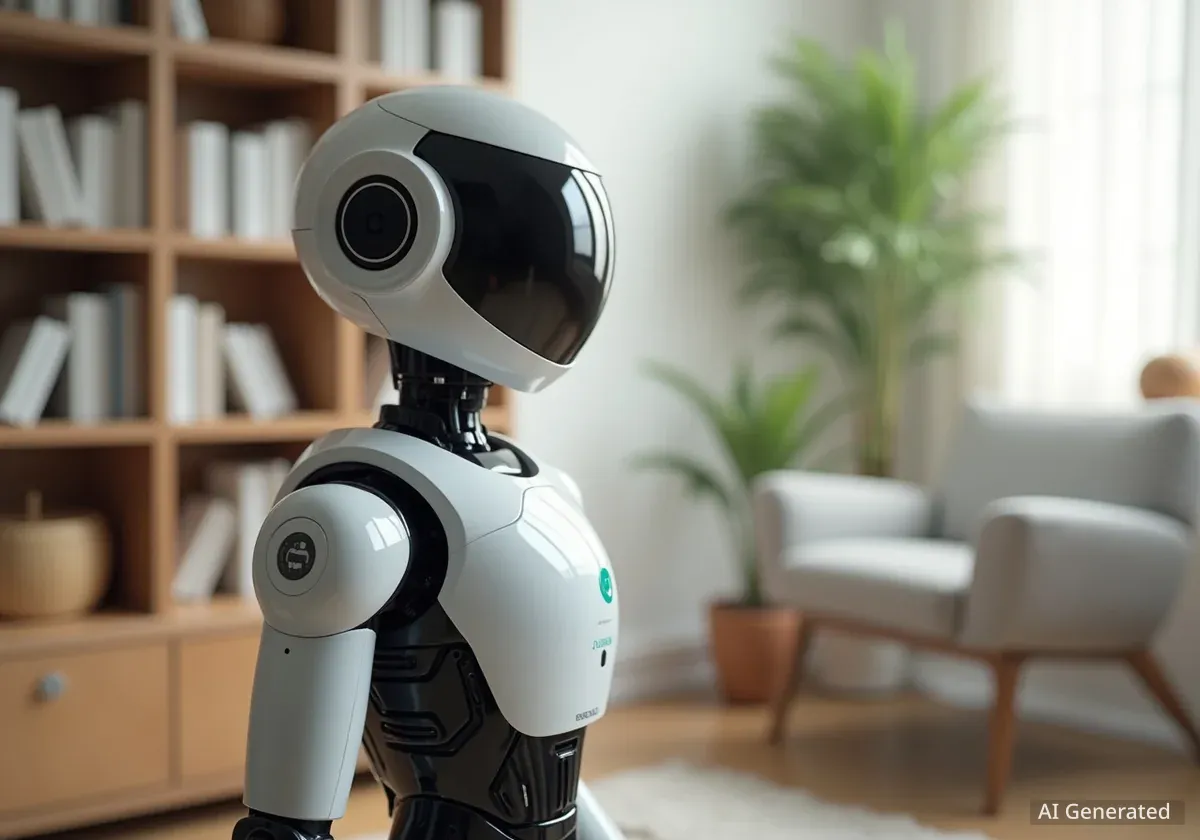A Beijing-based startup, Noetix Robotics, has introduced a new humanoid robot named Bumi, setting a remarkably low price point of approximately $1,400. This positions the robot as a direct competitor to high-end consumer electronics like flagship smartphones, aiming to bring humanoid robotics into homes and classrooms.
The announcement signals a potential shift in the robotics market, where high costs have traditionally limited humanoid robots to industrial applications and advanced research labs. With Bumi, Noetix is targeting a much broader audience, focusing on accessibility for everyday users and educational institutions.
Key Takeaways
- Noetix Robotics has revealed its new humanoid robot, Bumi, priced at nearly 10,000 yuan (about $1,400).
- The robot is designed for the consumer and educational markets, not for industrial or heavy-duty tasks.
- Bumi stands approximately three feet tall and weighs 26 pounds, making it lightweight and suitable for home environments.
- The price significantly undercuts other humanoid robots, including options from Unitree ($5,900) and Tesla's Optimus (estimated at $20,000).
A New Price Point for Personal Robotics
The most significant aspect of the Bumi robot is its price. At around $1,400, it challenges the perception that humanoid robots are prohibitively expensive. This cost is comparable to premium smartphones or high-end laptops, potentially opening the door for robotics to become a mainstream consumer product.
Unlike its more expensive counterparts designed for complex labor, Bumi is built for interaction and learning. Early demonstrations show the robot performing basic movements like walking and dancing. The company has stated that its primary goal is to make robotics accessible for creative and educational purposes.
The Growing Market for Affordable Robots
The push for lower-cost robotics is a growing trend. While companies like Boston Dynamics focus on highly advanced, high-cost machines for industrial and military use, a new wave of startups is targeting the consumer space. The goal is to move robots from factory floors and laboratories into living rooms and schools, creating new opportunities for learning and entertainment.
Designed for Consumers, Not Factories
Bumi's physical specifications reflect its intended use. Standing at just three feet tall and weighing a manageable 26 pounds, it is not an imposing figure. Its smaller size makes it safer and more practical for use in homes or classrooms where it might interact with children and pets.
Noetix Robotics plans to release a programming interface for Bumi. This will allow users, from students to hobbyists, to create their own applications and tasks for the robot. This focus on customization is key to its educational appeal, offering a hands-on platform for learning coding and robotics principles.
"The introduction of a programmable interface suggests a focus on user creativity, allowing individuals to explore the potential of robotics beyond pre-programmed functions."
Competitive Landscape and Market Position
Bumi enters the market at a price point that dramatically undercuts other known humanoid robots. For comparison, Unitree's R1 robot, also aimed at a more accessible market, was announced earlier this year with a starting price of $5,900. Tesla's highly anticipated Optimus robot is estimated to cost around $20,000 upon release.
Price Comparison: Humanoid Robots
- Noetix Bumi: ~$1,400
- Unitree R1: Starts at $5,900
- Tesla Optimus: Estimated at ~$20,000
This aggressive pricing strategy could allow Noetix to capture a significant share of the emerging consumer robotics market. By focusing on a specific niche—education and personal use—the company avoids direct competition with industrial giants while building a user base in a new and growing sector.
Company Background and Future Plans
While a startup, Noetix Robotics is not entirely new to the field. The company previously gained recognition for its N2 model, which successfully completed the world's first half-marathon for robots. That achievement demonstrated the company's technical capabilities in mobility and endurance, with the N2 being one of only four robots to finish the race.
This background in building robust walking robots provides a solid foundation for the development of Bumi. The company's experience in locomotion is crucial for creating a humanoid robot that can navigate real-world environments like a home.
Noetix has announced that it plans to open preorders for the Bumi robot later this year. The initial launch will likely provide a clearer picture of public interest and the practical applications users find for such an affordable machine. The success of Bumi could pave the way for more advanced and equally accessible robots in the future, fundamentally changing how we interact with technology in our daily lives.


